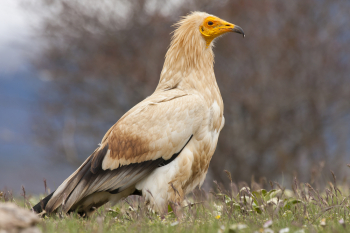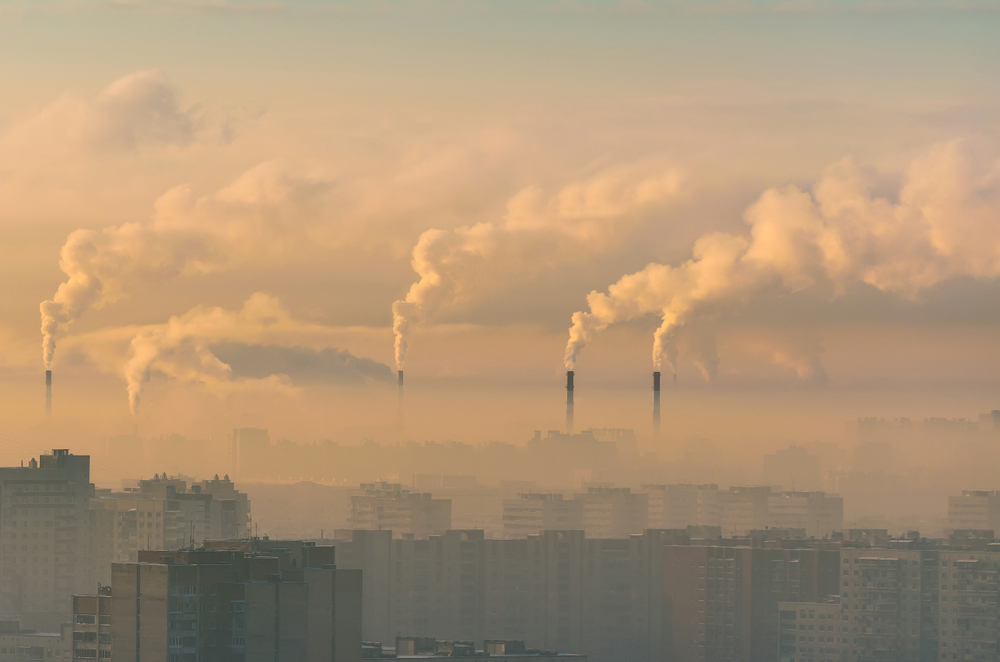An endangered species is a species of animal or plant that is seriously at risk of extinction. The International Union for Conservation of Nature (IUCN), an organization funded by the European Commission, is regarded as a global authority on the world’s living species and maintains a list of the world’s endangered species. More than 8,000 scientists from 162 countries make up the IUCN’s Species Survival Commission, which designates as “threatened” any species falling within the critically endangered, endangered, and vulnerable categories. These species are assigned categories based on the level of extinction risk. Identifying a species as threatened and assigning it to one of the related categories is a complicated process, involving the analysis of multiple interconnected variables. These include population size, geographic range, and the number of breeding adults.
Risk Factors
Population Size
There are a variety of factors that put these plants and animals at risk. Most species placed on endangered lists have very small populations with a small number of breeding adults. In addition to being a problem in its own right, this can lead to a loss of genetic variation among species, since small populations of animals are forced to inbreed. The young are subsequently left vulnerable to disease and often fail to reach maturity.
Habitat
Habitat can also be a risk factor. From the clear-cutting of the Amazon rainforest for the purpose of grazing cattle to overhunting and overfishing, living species are under increasing strain in the modern world. When humans build homes, office buildings, and fun parks, preserving space for plants and animals is frequently not a priority. Loss of habitat creates a ripple effect, with animals often deprived of shelter and primary food sources that end up placing them in a vulnerable state.
Range
A plant or animal's range is a function of its habitat and is also used to assess a population's survival risks.
Environmental Factors
Finally, environmental factors such as pollution, a changing global climate, and increasingly extreme weather events are other factors placing a strain on the world’s plants and animals. Before a plant or animal is considered endangered, these factors are taken into consideration. Awareness of the problem leads to a search for solutions—and some measures are being enacted—although current trends suggest that the number of endangered species will only increase as time goes on.
Estonia's Threatened Species
Note: Numbers reflect current estimates and may vary by source.
Top Three Endangered Mammals of Estonia
Eurasian Otter
Native to Europe, Asia, and parts of North Africa, the Eurasian otter is a medium-size mammal with a streamlined body covered with dense, waterproof fur. They can be found in a variety of freshwater habitats, including rivers, lakes, and coastal areas, as well as in some saltwater environments. Eurasian otters are opportunistic predators that feed mainly on fish, but they also will consume crustaceans, amphibians, and small mammals. They are skilled hunters, using their keen senses and powerful jaws to catch their prey. Eurasian otters are generally solitary animals that are active both day and night. They are excellent swimmers and divers and use their webbed feet and powerful tails to maneuver through the water in pursuit of prey. When they are not hunting, they can often be found resting on banks or in dens made of sticks and mud. Eurasian otters play an important role in their ecosystem as top predators helping to regulate populations of their prey species. They also are important indicators of the health of freshwater ecosystems, as their presence is often seen as an indication of a healthy, diverse, and productive ecosystem.
Native to Europe, Asia, and parts of North Africa, the Eurasian otter is a medium-size mammal with a streamlined body covered with dense, waterproof fur. They can be found in a variety of freshwater habitats, including rivers, lakes, and coastal areas, as well as in some saltwater environments. Eurasian otters are opportunistic predators that feed mainly on fish, but they also will consume crustaceans, amphibians, and small mammals. They are skilled hunters, using their keen senses and powerful jaws to catch their prey. Eurasian otters are generally solitary animals that are active both day and night. They are excellent swimmers and divers and use their webbed feet and powerful tails to maneuver through the water in pursuit of prey. When they are not hunting, they can often be found resting on banks or in dens made of sticks and mud. Eurasian otters play an important role in their ecosystem as top predators helping to regulate populations of their prey species. They also are important indicators of the health of freshwater ecosystems, as their presence is often seen as an indication of a healthy, diverse, and productive ecosystem.
Wolverine
The wolverine is a large carnivorous mammal found in boreal forests, tundra, and mountain ranges of the northern hemisphere, primarily in Arctic and sub-Arctic regions. It has a stocky build, short legs, and broad head. Its fur is usually dark brown, with lighter streaks on its back and legs. The wolverine's diet mainly consists of meat, including carrion, small mammals, and birds. They also have been known to scavenge food from other predators. The wolverine is a solitary and territorial animal, marking its territory with scent. They are known for their strength and ferocity. Wolverines are opportunistic feeders and will scavenge food when available. They are active year-round and primarily hunt at night.
Wolverines are endangered due to factors such as habitat loss and fragmentation, climate change, trapping, low genetic diversity, and persecution. Logging, mining, and human settlement have reduced and fragmented wolverine habitats, making it difficult for them to survive. Changes in snow cover and the timing and availability of food sources due to climate change are affecting wolverine populations. Historically, wolverines were hunted for their fur, and although trapping is now regulated, it still poses a threat to the species. Small population sizes and isolation have resulted in low genetic diversity in wolverine populations, making them more vulnerable to disease and inbreeding. Wolverines are sometimes viewed as a threat to livestock and game animals, leading to intentional killing by humans. Conservation efforts, such as habitat protection and restoration, monitoring of populations, and regulating hunting and trapping, are underway to help protect and conserve wolverine populations.
European Mink
The European mink is a small carnivorous mammal belonging to the weasel family. It is a slender, agile animal with a dark brown to black fur coat and a white chin and throat. It has a long, slender body, short legs, and a bushy tail. The European mink is found in wetland habitats, such as rivers, streams, and marshes. It prefers areas with dense vegetation and access to both water and land. The European mink is a carnivore, feeding mainly on fish, crustaceans, and small mammals such as mice and voles. It is an excellent swimmer and often catches its prey in the water. European minks are solitary animals and are active both during the day and night. They are territorial, marking their territories with scent. They also are excellent climbers and can climb trees to escape predators or to find food.
This species is endangered due to habitat loss, non-native species, pollution, trapping, and climate change. The destruction and degradation of wetland habitats, such as rivers, streams, and marshes, is a major threat to the European mink. This has reduced the availability of food and shelter, as well as increased the risk of predation. Additionally, the non-native American mink competes with and hybridizes with the European mink, reducing the size and genetic diversity of populations. The release of pollutants into the environment, such as chemicals and toxic waste, can have a negative impact on the health and survival of the European mink. In some areas, the European mink is still hunted and trapped for its fur. Climate change also is having an impact on the species, affecting its food sources, habitat, and overall survival.
Other Endangered Mammals of Estonia
Estonia’s endangered mammals face loss of habitat, illegal and overhunting, and degradation of habitat due to pollution or clearing of land for human and agricultural purposes. Among the country’s other endangered mammals are the garden dormouse, pond bat, brown bear, and European water vole.
| The following sections describe the three groups (aside from mammals) with the largest numbers of endangered species according to the table above. |
Endangered Birds of Estonia
Loss of habitat and illegal trading are among the factors negatively impacting Estonia’s endangered birds. An increased human population affects bird populations, as do agricultural ventures including logging and raising animals and crops. These have an adverse affect on birds that scavenge on livestock carcasses or chemically-treated crops. Pollution also impacts birds, including pollution from fertilizers and pesticides that impact native plants, which are often food sources. Among Estonia’s endangered bird species are the Egyptian vulture, red-footed falcon, great snipe, Eurasian curlew, and Eurasian peregrine falcon.
Other Endangered Invertebrates of Estonia
Aside from mollusks, other invertebrates—those species lacking a backbone—include sponges, jellyfish, corals, sea anemones, sea urchins, worms, leeches, insects, spiders, crabs, and many more. A number of factors affect this expansive category of species, including loss of habitat due to human activity, invasive and predator species, wetland drainage, dredging, pollution, and toxic sediment. Estonia’s endangered invertebrates are the broad-fingered crayfish, small lappet moth, flatbark beetle species Cucujus cinnaberinus, and the pygmy damselfly.
Endangered Fishes of Estonia
Habitat degradation, including pollution, are among the factors that impacts Estonia’s fish, with both resulting from human activity. However, the most significant issue in dwindling fish numbers is the commercial fishing industry, which overfishes as well as discards bycatch—species unintentionally caught while fishing for other species. Unregulated fishing is another problem. Endangered fish in Estonia include the Atlantic cod, European eel, and maraene whitefish.
Copyright © 1993-2025 World Trade Press. All rights reserved.



